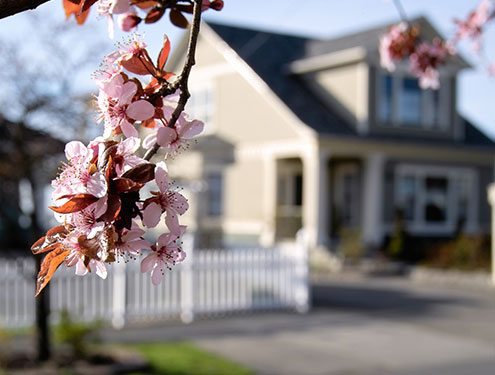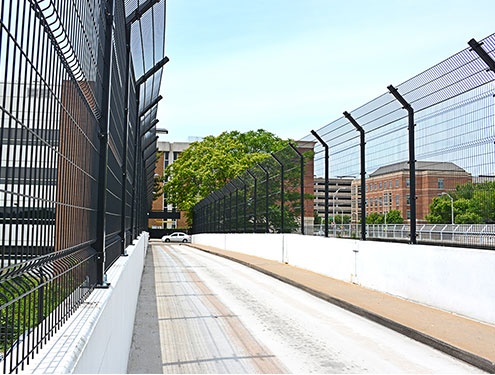Contents
- 1 Key Aspects of Virginia’s Livestock Fence Laws
- 2 Additional Regulations and Considerations
- 3 Financial Responsibilities for Livestock Fences
- 4 Exploring Livestock Fence Options
- 5 Benefits of Proper Livestock Fencing
- 6 Common Disputes and How to Avoid Them
- 7 Conclusion: Understanding Virginia’s Livestock Fence Laws
Key Aspects of Virginia’s Livestock Fence Laws
What Constitutes a Lawful Fence?
As per § 55.1-2804 of the Code of Virginia, a fence is deemed lawful for confining domesticated livestock if it meets specific criteria ensuring that animals cannot creep through. The updated guidelines are as follows:- Height Requirements
- The fence must be at least five feet high, including the height of any mound on which the fence is placed, measured to the bottom of a ditch if present.
- Barbed Wire Fence
- A barbed wire fence must be at least 42 inches high and constructed with at least four strands of barbed wire.
- The strands must be securely fixed to posts, trees, or other supports set firmly in the ground, spaced no more than 12 feet apart. If the posts are farther apart, a substantial stay or brace must be installed midway to support the wires.
- Board, Plank, or Rail Fence
- A board fence must be at least 42 inches high and constructed with at least three boards, planks, or rails.
- These components must be securely attached to posts, trees, or supports firmly set in the ground.
- Fences in Town Limits
- Within town limits where no specific charter provisions or council regulations exist, a lawful fence must be at least three feet high.
- Other Fencing Types
- Any other type of fence, provided it is:
- At least 42 inches high.
- Constructed with materials specifically sold for fencing or using technology generally accepted for livestock containment.
- Installed according to accepted standards to prevent livestock from creeping through.
- Any other type of fence, provided it is:
- Cattle Guards
- A cattle guard that is reasonably sufficient to prevent the passage of livestock is also considered a lawful fence.
Additional Regulations and Considerations
- The Board of Agriculture and Consumer Services is authorized to adopt regulations for greater specificity in fencing requirements, consistent with § 55.1-2804. However, the absence of such regulations does not affect the validity of the provisions outlined in this section.
- Local towns retain the authority to regulate or forbid the running at large of cattle and other domesticated animals within their limits.
Financial Responsibilities for Livestock Fences
In Virginia, the financial responsibilities for constructing and maintaining division fences between adjoining properties are outlined in the Code of Virginia, specifically in § 55.1-2821 through § 55.1-2826. These sections detail the obligations of landowners regarding division fences, commonly referred to as boundary fences.Key Provisions:
- Mutual Obligation for Division Fences:
- When adjoining landowners use a fence as a division between their properties, both parties are responsible for maintaining it. If one landowner desires a division fence and the other does not, the interested party may build the fence at their own expense. However, if the non-participating landowner later decides to use the fence, they are required to reimburse half of the fence's value to the builder.
- Construction and Maintenance:
- Landowners are expected to equally share the costs associated with the construction and upkeep of division fences. This shared responsibility ensures that both parties benefit from the fence and contribute to its maintenance.
- Resolution of Disputes:
- In cases where disputes arise regarding the construction or maintenance of division fences, landowners can seek resolution through local authorities or the court system. The Code provides mechanisms for addressing disagreements to ensure fair outcomes for all parties involved.
Historical Context:
Historically, Virginia operated under a "fence-out" system, where landowners were responsible for fencing out wandering livestock. Over time, this evolved into a "fence-in" system, placing the onus on livestock owners to contain their animals. The current laws reflect this evolution, emphasizing shared responsibility between adjoining landowners, especially when both have an interest in the division fence.Important Considerations:
- Local Ordinances: Some counties or municipalities in Virginia may have specific ordinances that modify or add to state fence laws. It's essential to consult local regulations to ensure compliance.
- Written Agreements: To prevent future disputes, it's advisable for adjoining landowners to draft written agreements outlining the responsibilities for fence construction and maintenance. Such agreements can be recorded in land records to inform future property owners.
Exploring Livestock Fence Options
Selecting the right type of livestock fence is crucial for meeting legal requirements and effectively managing your animals. The most popular options include:1. Ranch Fencing
Ranch fencing, characterized by horizontal planks connected by sturdy posts, is a common choice for livestock owners. Variations include:- Vinyl Ranch Fencing: Durable, low-maintenance, and available in various colors, vinyl fencing offers a clean and modern appearance. It’s an investment, but its longevity makes it cost-effective over time.
- Wood Ranch Fencing: Affordable and rustic, wood fencing can be painted or stained to match your aesthetic preferences. However, it requires regular upkeep to prevent warping, insect damage, and weathering.
2. Electric Fencing
Electric fencing is legal in Virginia and is becoming an increasingly popular choice for livestock owners. Newer designs, such as high-tensile woven wire or fixed-knot electric fences, are both cost-effective and efficient. When using electric fences, ensure that the controller meets state standards for safety and performance.3. Flexible Fencing Materials
Flexible polyethylene fencing is another option for those seeking durability and safety. Unlike traditional materials, it bends under pressure rather than breaking, making it ideal for containing larger or more active animals. This type of fence can withstand over 4,000 pounds of pressure per rail.Benefits of Proper Livestock Fencing
Investing in a compliant and high-quality livestock fence offers numerous benefits:- Animal Safety: Preventing livestock from wandering onto roads or neighboring properties reduces the risk of accidents and injuries.
- Property Value: Well-maintained fencing enhances the aesthetic and functional appeal of your property, increasing its market value.
- Boundary Definition: Clear boundaries reduce disputes with neighbors and ensure proper use of land.
Common Disputes and How to Avoid Them
Despite clear laws, disputes over livestock fences can arise. Common issues include:- Responsibility for Fence Repairs: Neighboring livestock owners must equally share repair costs, but disagreements over the extent of repairs can occur.
- Boundary Disputes: Properly marked and surveyed fence lines can prevent arguments about property boundaries.


